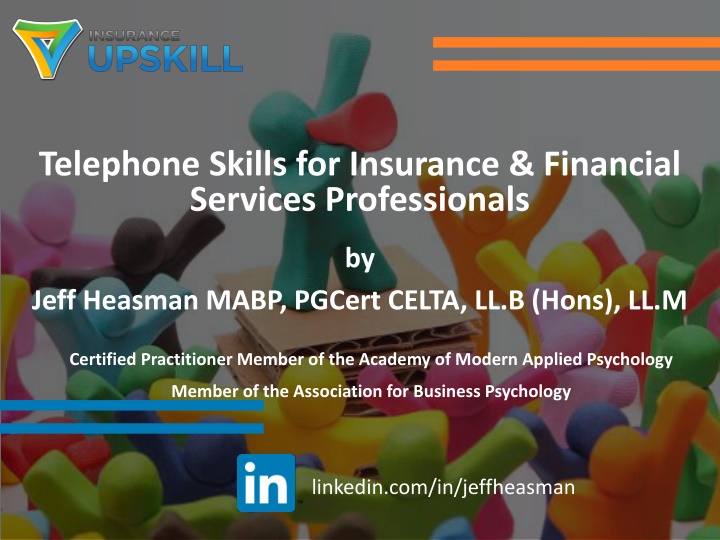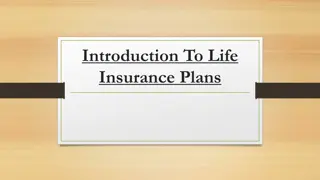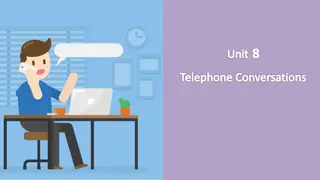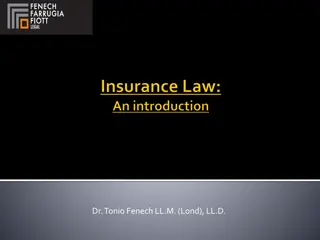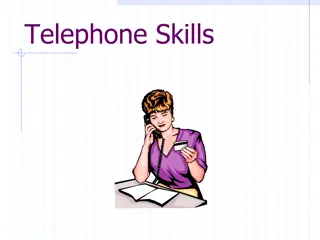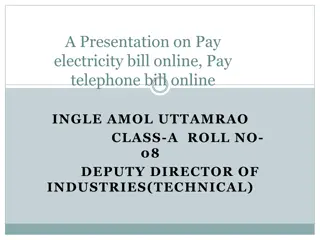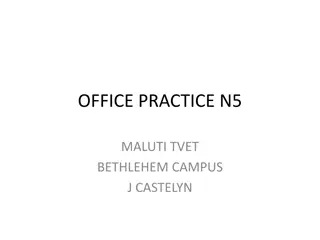Enhancing Telephone Skills for Insurance and Financial Services Professionals
Improve your communication abilities over the phone with insights on key skills, communication dynamics, and strategies for confident interactions. Explore advantages and disadvantages of telephone and email communication, emphasizing the power of voice for conveying emotions effectively. Learn about the cognitive costs of text-based communication and the importance of auditory clues in fostering rapport and swift issue resolution.
Download Presentation

Please find below an Image/Link to download the presentation.
The content on the website is provided AS IS for your information and personal use only. It may not be sold, licensed, or shared on other websites without obtaining consent from the author.If you encounter any issues during the download, it is possible that the publisher has removed the file from their server.
You are allowed to download the files provided on this website for personal or commercial use, subject to the condition that they are used lawfully. All files are the property of their respective owners.
The content on the website is provided AS IS for your information and personal use only. It may not be sold, licensed, or shared on other websites without obtaining consent from the author.
E N D
Presentation Transcript
Telephone Skills for Insurance & Financial Services Professionals by Jeff Heasman MABP, PGCert CELTA, LL.B (Hons), LL.M Certified Practitioner Member of the Academy of Modern Applied Psychology Member of the Association for Business Psychology linkedin.com/in/jeffheasman
Learning objectives By the end of this session, participants will be able to: identify key skills necessary to communicate clearly and effectively using the telephone. understand the various dynamics that take place during inbound and outbound calls and adjust style accordingly. implement a strategy to be more confident and effective when dealing with inbound calls or making outbound calls.
Communication channels The hierarchy of communication. Vulnerable Customers. Consumer Duty. Check and regularly update. Ask for permission to switch.
Email Disadvantages Advantages Can be sent too quickly, without proper thought. There could be another person involved. Difficult to pull a situation back when it goes wrong. Allows someone time to think. No auditory clues. Everything is in writing. You can bypass the gatekeeper . Allows someone time to think.
Telephone Advantages Disadvantages No formal record. Availability or lack of. If not properly planned it can put you at a disadvantage. More personable (rapport) Auditory clues. People are likely to be more flexible and easier to persuade. Often results in quicker settlement of issues. People are likely to be more open because it s not in writing .
The Power of Talk When research from UCB, Illinois and Harvard is combined, we can conclude the following: Bad or unexpected news is better communicated by voice. It is almost impossible to change the way the message has been received. We overestimate our ability to convey the correct emotion through the written word. The written word can reinforce perceptions of stereotype. Leigh Thompson in Negotiating the Sweet Spot refers to the illusion of transparency/grey effect.
Cognitive cost A study in published in 2022 by Florida International University found: The absence of cues means that text-based communication takes longer and requires more thought to arrive at a shared understanding. You have to think about what you re writing, to make sure it s not misinterpreted As a result, [you] may not have the energy required to effectively deal with subsequent tasks requiring complex reasoning (e.g., writing a report) .
Research from Harvard Business School in the context of remote working concluded that 70% of people frequently receive unclear communication through email. It also results in: missed deadlines passive-aggressiveness emails ignored It has been calculated to cost $188 billion dollars to the economy.
Client expectations and etiquette Inbound the client has a goal (why are they calling?), be sure to listen to what it is and repeat it back to them. Outbound be clear and concise about your goal (why are you calling?). Set the goals with the client beforehand, if possible.
Answer as soon as possible the longer the phone rings, the more you are moving away from meeting customer expectations. Use the person s name whenever possible and personal pronouns. Don t put the person on loudspeaker unless they have granted permission. Ask for permission if you need to transfer a call or put someone on hold. Maybe they prefer to leave a message or send an email (they may be under time pressures). Be conscious of your surroundings (it is amazing what you can overhear in public).
Do customers always expect a response? Research from Edison suggests, not always, but more so with telephone: telephone: 91% email: 89% discussion forums: 47% social media: 42% Regulatory / legal obligations
Listening skills Active. Discriminative and what the client isn t saying! Rutger Bregman in Human Kind, A Hopeful History closeness and similarity (language convergence).
Emotional transfer and unconscious bias Space calls appropriately. Avoid confirmation bias: use open and probing questions. avoid leading and multiple questions. avoid the mom/mam/mum test. The 4 voices Why are We Yelling? By Buster Benson.
Difficult conversations Hypothetical questions. The accusation list / front-load what you have to say. Empathy v compassion (the desire to help). Empathy can blind us. Anger v disappointment. Avoiding but/however.
Summary Think of the appropriate communication channel. The power of talk. Cognitive cost in text-based communications. Client expectations and etiquette. Listening skills Emotional transfer and difficult conversations.
Restatement of learning objectives During this session, we have: identified key skills necessary to communicate clearly and effectively using the telephone. understood the various dynamics that take place during inbound and outbound calls and adjust style accordingly. learnt how to implement a strategy to be more confident and effective when dealing with inbound calls or making outbound calls.
